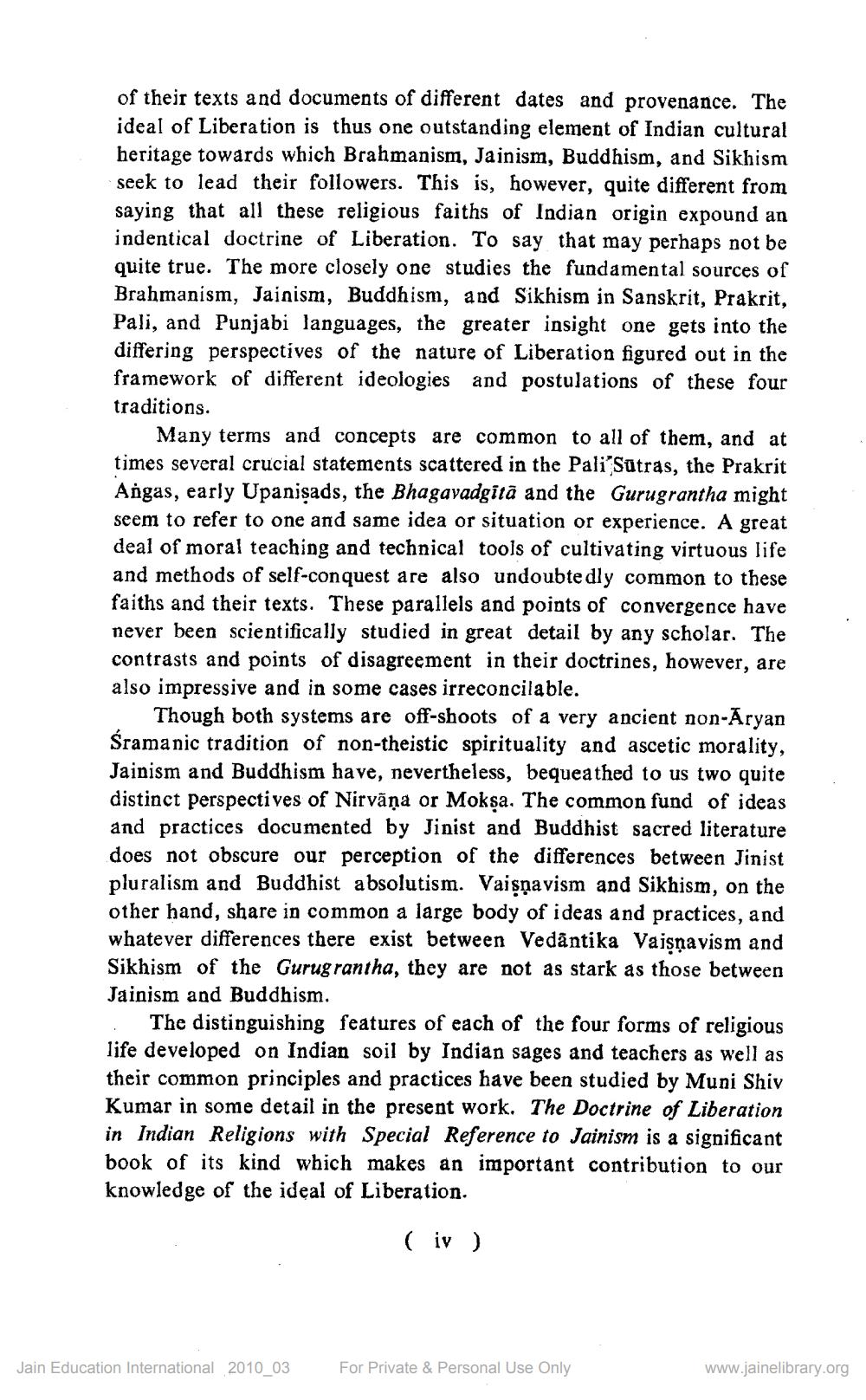Book Title: Doctrine of Liberation in Indian Religion Author(s): Shivkumarmuni Publisher: Munshiram Manoharlal Publisher's Pvt Ltd New Delhi View full book textPage 6
________________ of their texts and documents of different dates and provenance. The ideal of Liberation is thus one outstanding element of Indian cultural heritage towards which Brahmanism, Jainism, Buddhism, and Sikhism seek to lead their followers. This is, however, quite different from saying that all these religious faiths of Indian origin expound an indentical doctrine of Liberation. To say that may perhaps not be quite true. The more closely one studies the fundamental sources of Brahmanism, Jainism, Buddhism, and Sikhism in Sanskrit, Prakrit, Pali, and Punjabi languages, the greater insight one gets into the differing perspectives of the nature of Liberation figured out in the framework of different ideologies and postulations of these four traditions. Many terms and concepts are common to all of them, and at times several crucial statements scattered in the Pali Sutras, the Prakrit Angas, early Upanişads, the Bhagavadgitā and the Gurugrantha might seem to refer to one and same idea or situation or experience. A great deal of moral teaching and technical tools of cultivating virtuous life and methods of self-conquest are also undoubtedly common to these faiths and their texts. These parallels and points of convergence have never been scientifically studied in great detail by any scholar. The contrasts and points of disagreement in their doctrines, however, are also impressive and in some cases irreconcilable. Though both systems are off-shoots of a very ancient non-Aryan Śramanic tradition of non-theistic spirituality and ascetic morality, Jainism and Buddhism have, nevertheless, bequeathed to us two quite distinct Perspectives of Nirvana or Moksa. The common fund of ideas and practices documented by Jinist and Buddhist sacred literature does not obscure our perception of the differences between Jinist pluralism and Buddhist absolutism. Vaişņavism and Sikhism, on the other hand, share in common a large body of ideas and practices, and whatever differences there exist between Vedāntika Vajsņavism and Sikhism of the Gurugrantha, they are not as stark as those between Jainism and Buddhism. The distinguishing features of each of the four forms of religious life developed on Indian soil by Indian sages and teachers as well as their common principles and practices have been studied by Muni Shiv Kumar in some detail in the present work. The Doctrine of Liberation in Indian Religions with Special Reference to Jainism is a significant book of its kind which makes an important contribution to our knowledge of the ideal of Liberation. (iv ) Jain Education International 2010_03 For Private & Personal Use Only www.jainelibrary.orgPage Navigation
1 ... 4 5 6 7 8 9 10 11 12 13 14 15 16 17 18 19 20 21 22 23 24 25 26 27 28 29 30 31 32 33 34 35 36 37 38 39 40 41 42 43 44 45 46 47 48 49 50 51 52 53 54 55 56 57 58 59 60 61 62 ... 240
